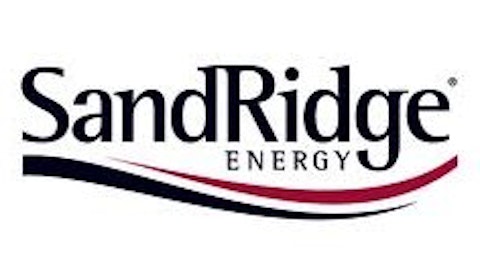Deepwater drilling is overshadowed by onshore oil and natural gas plays, but the profits are still very real.
Two major players get the bulk of attention from investors. On one hand, there is the older and more experienced Transocean LTD (NYSE:RIG). On another hand is Seadrill Ltd (NYSE:SDRL) , a new company backed by one of the John Fredriksen, a veteran of the oil container shipping business.

What’s the Difference?
A driller is a relative commodity. Asset owners like Royal Dutch Shell plc (ADR) (NYSE:RDS.A) or BP plc (ADR) (NYSE:BP) hire the drilling services and equipment from Transocean LTD (NYSE:RIG) and Seadrill to develop underwater oil wells. The business is simple, even if the execution is not. Transocean and Seadrill Ltd (NYSE:SDRL) invest heavily in rigs, which are then hired out on a day rate in the hundreds of thousands of dollars per day.
Their business is the same. The way these two companies approach the business couldn’t be more different, however.
Let’s look at the upsides and downsides with each company.
Transocean
The leading player in the space finally shed much of the liability risk from its Macondo disaster in the Gulf of Mexico. The largest offshore oil spill in U.S. history ended with the death of 11 crewman and $1.4 billion in damages and penalties.
The disaster showed weaknesses in Transocean LTD (NYSE:RIG)’s rigs. The company has much older rigs than Seadrill Ltd (NYSE:SDRL). Post-disaster, the company has spent heavily to maintain its existing rigs and work on blowout preventers. Maintenance has lead to horrendous downtime. The company expects that revenue efficiency should rise into 95%+ territory, up from 90% in 2011 and 93% in 2012.
Improving downtime and working on its cost structure should help Transocean LTD (NYSE:RIG) drive net margins. The company announced a $300 million cost-cutting program that would pay rewards by 2014. The announcement was timed with Carl Icahn’s move to push the company to pay a dividend and swap out three existing board members for a roster selected by Icahn.
For long-term shareholders, Icahn’s participation is little more than a distraction. Icahn pushed for a $4 dividend per share payable in 2013 and three new directors on the board. Transocean LTD (NYSE:RIG)’s board proposed a quarterly dividend that would amount to $2.24 per year, an amount which the company says it can afford.
Seadrill
Seadrill uses aggressive and creative financing to grow quickly. The company seeks to lease its rigs under much longer contracts, later extracting the value from these future cash flows to acquire new rigs or to pay lofty dividends to shareholders.
Seadrill Ltd (NYSE:SDRL)’s rigs are all less than a decade old, which is obvious from the company’s impressive utilization of better than 95%.
Whereas Transocean LTD (NYSE:RIG) faces equipment and efficiency risks, Seadrill’s model faces higher risks from swings in oil prices. The company’s debt gives Seadrill Ltd (NYSE:SDRL) a higher cost structure that would crush profits should lease revenue dry up on sustained lower oil prices. The company had 50 rigs in 2012, a number which it intends to grow to 75 by 2015.
Seadrill’s aggressive model is a concern in a commodity business. There is substantial demand for rigs at the present time due to a shortage and low utilization and rigs are updated for safety improvements. However, a cyclical shift in oil prices could punish the company due to its levered balance sheet. A total of $14.1 billion in total liabilities compared to $5.5 billion in shareholder equity make this a highly-levered bet on rig demand. The company’s rigs are estimated to be worth between $9 and $10 billion. Current assets of $2.3 billion hardly insulate it from a downturn.
Playing the space
Seadrill Ltd (NYSE:SDRL) and Transocean are very different plays on the same industry. First, Seadrill is executing perfectly, maintaining high revenue efficiency and securing long-term leases on its new rigs, some even before they’re built.
Transocean, on the other hand, is only recovering. It’s focused on cost-cutting and efficiency, hoping to divest parts of its business to focus on deepwater contracts – the most rewarding segment of the business.
Given market valuations, Transocean looks to be a better value than Seadrill. Transocean trades at roughly 10 times forward earnings potential. Seadrill trades at 10 times expected forward earnings, but is significantly levered in its expansion with 25 new rigs from 2012-2015 and debt levels that are significantly above the industry average.
Transocean has room for upside should it re-establish a dividend policy by a vote on May 17. Conservative investors should play the turnaround at Transocean before the perfection at Seadrill. Improving on terrible performance at Transocean is a better bet on the continuation of perfection at rival Seadrill.
The article Which Deepwater Play Will Line Your Pockets? originally appeared on Fool.com is written by Jordan Wathen.
Copyright © 1995 – 2013 The Motley Fool, LLC. All rights reserved. The Motley Fool has a disclosure policy.




